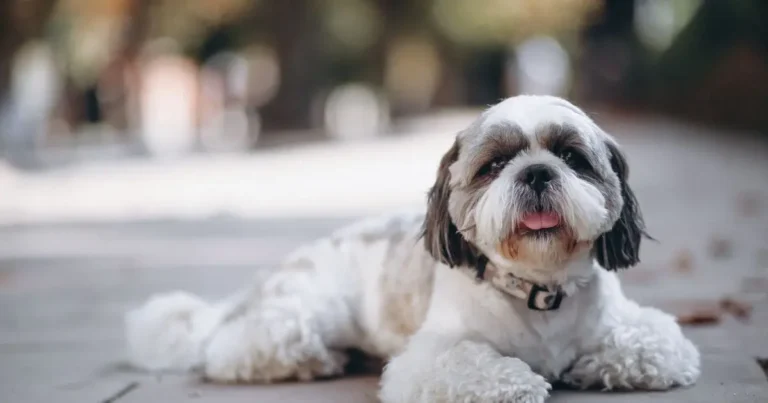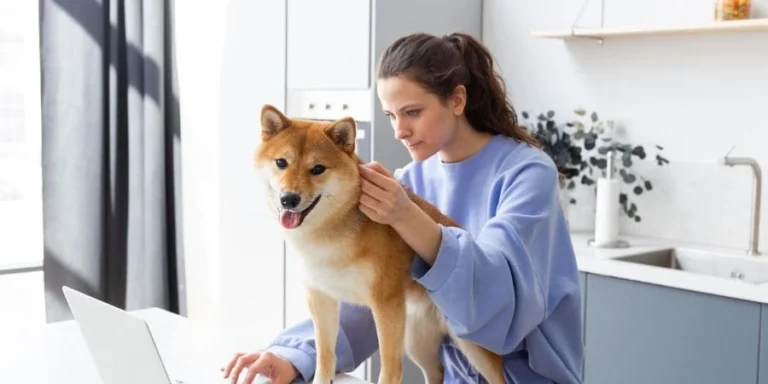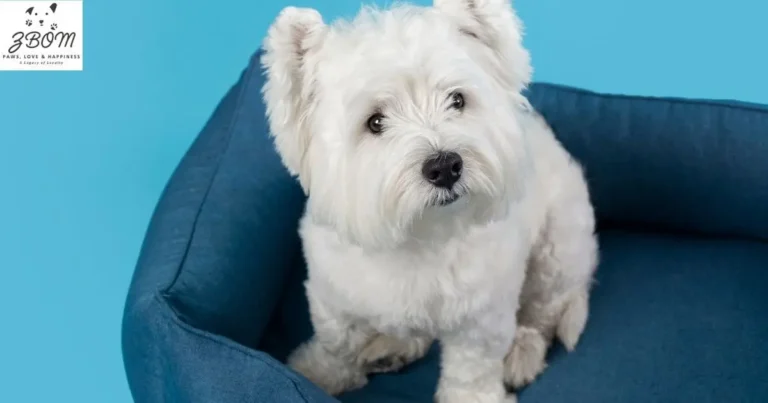
How to Train a Deformed French Bulldog Effectively
How to Train a Deformed French Bulldog Effectively French Bulldogs are one of the most adorable and popular breeds in the world. If you are looking for a French Bulldog for sale, Blue Haven French Bulldogs offers healthy and well-raised puppies that will surely melt your heart. Each Frenchie stands out for its compact size, charming look, and affectionate personality.
Proper French Bulldog care is essential to ensure a healthy French Bulldog. This includes the right French Bulldog diet, regular French Bulldog exercise, and scheduled French Bulldog vet checkups. Maintaining good health and activity helps improve French Bulldog mobility, How to Train a Deformed French Bulldog Effectively French Bulldog posture, and keeps French Bulldog muscles strong.
When it comes to French Bulldog training, consistency and patience are key. Understanding French Bulldog characteristics and French Bulldog temperament helps you create a positive French Bulldog routine. By training French Bulldogs gently, you can enhance their French Bulldog behavior and strengthen French Bulldog bonding with your family.
The French Bulldog breed is known for its unique French Bulldog appearance, including bat-like ears and expressive eyes. French Bulldog colors vary beautifully, from brindle and fawn to cream and rare shades like blue and lilac. With an ideal French Bulldog weight of 16–28 pounds and a French Bulldog height of around 11–12 inches, these compact dogs are perfect for French Bulldog apartment living.
Also Read: A Comprehensive Guide to Understanding EM EM French Bulldog DNA
Short answer About: Unpacking French Bulldog’s Behavior Problems
One common issue is stubbornness. French Bulldogs are intelligent but can be willful, making training challenging if inconsistent methods are used. Positive reinforcement, patience, How to Train a Deformed French Bulldog Effectively and short, structured training sessions work best to keep them engaged. Harsh discipline or negative reinforcement often backfires, as Frenchies can become more resistant or anxious.
Unpacking French Bulldog’s Behavior Problems
A French Bulldog, also known as a Frenchie, is adorable but can sometimes be a stubborn French Bulldog or even a disobedient French Bulldog. Understanding French Bulldog behavior and managing French Bulldog stubbornness is essential for every owner.

Issues like excessive barking, ignoring commands, and French Bulldog dominance or dominance over the pack are common French Bulldog behavioral problems. These challenges often arise due to the French Bulldog environment, French Bulldog health issues, or French Bulldog genetics.
Certain French Bulldog breed traits and inherited behaviors contribute to their strong French Bulldog temperament, French Bulldog independence, and French Bulldog protective nature. How to Train a Deformed French Bulldog Effectively How to Train a Deformed French Bulldog Effectively Despite these traits, their loving French Bulldog companionship makes all the effort worthwhile.
When training a stubborn French Bulldog, focus on French Bulldog patience and French Bulldog consistency. With proper French Bulldog training, you can transform your pet into a well-behaved French Bulldog who respects your French Bulldog leadership and follows your guidance with trust and affection.
Also Read: How to Identify Isabella Frenchie Color
Techniques for Addressing Frenchie’s Bad Habits.
A stubborn Frenchie can be challenging, but training a stubborn French Bulldog becomes easier with positive reinforcement instead of punishment methods. Focus on rewarding good behavior and ignoring bad behavior. Use praises and treats to motivate your dog. Giving a chew toy or some training treats helps reinforce good manners.
Including mental stimulation games in their routine can reduce destructive habits like chewing and biting. Fun activities such as puzzle toys, hide and seek, and tug-of-war keep your unique Frenchie engaged and happy.
Consistency and a daily routine are vital for managing bad behaviors, especially in stubborn Frenchie puppies. Fixed meal times and walk times help lower anxiety in Frenchies, minimizing whining and barking.
With patience and effective training techniques, you can succeed in learning new tricks with your unique Frenchie, creating a calm and well-behaved companion through love and structure.
Leash and Housebreaking Training Strategies
Leash training is an important part of raising a French Bulldog pup. Begin with early leash training to establish proper leash control and prevent dog pulling or barking at passersby. Training requires consistency and patience to achieve the best results. How to Train a Deformed French Bulldog Effectively Use a slip lead instead of a flat collar, as it offers better comfort. A harness, especially a Ruffwear harness or Ruffwear slip lead, can make walks safer and more enjoyable.
Crate training is also essential for housebreaking. A crate provides a safe space for your pup to rest and learn boundaries. Never use the crate as a punishment tool. Choose a 24 inch crate that fits your dog comfortably and ensure frequent potty breaks to avoid stress.
Also Read: How to Care for Your Pied Frenchies Effectively
Reward-based potty training uses positive reinforcement to teach your dog good habits. Offer training treats, use a specific outdoor spot, and give a go potty command followed by praise when they succeed. A consistent potty training routine helps reduce accidents and improves behavior.
When training stubborn French Bulldogs, How to Train a Deformed French Bulldog Effectively patience and repetition bring steady training progress, How to Train a Deformed French Bulldog Effectively resulting in a happy and well-trained companion.
Handling Separation Anxiety in Frenchies
Recognizing signs of separation anxiety in your Frenchie is crucial. Symptoms may include excessive barking, howling, destructive chewing, incessant pacing, How to Train a Deformed French Bulldog Effectively and even indoor accidents in a previously house-trained Frenchie. This condition can be stressful for your dog, making it important to intervene early.
Gradual desensitization is effective for reducing separation anxiety in French Bulldogs. Begin by leaving your Frenchie alone for short periods and gradually increase the duration. Always reward calm behavior with treats or praise, and remember that patience is essential during this process.
Interactive toys and puzzles help keep your Frenchie mentally stimulated. Examples include puzzle toys, treat-dispensing toys, and chew toys, which serve as distractions and reduce anxiety. These tools are also helpful when you need to train a stubborn French Bulldog dealing with separation anxiety.
Using interactive dog toys along with consistent desensitization and positive reinforcement ensures your Frenchie feels safe, calm, and confident when left alone.
Also Read: How I Got Started with Full Breed French Bulldog Price
Importance of Early Socialization in Training
1.Benefits of Early Exposure
Training a stubborn French Bulldog requires early socialization and proper training methods to achieve the best results. One of the major benefits of early exposure is exposing Frenchie to various environments, people, and animals, which shapes their Frenchie personality and helps them handle new experiences confidently.
2.Impact on Temperament and Adaptability
Early socialization also improves temperament and adaptability skills, contributing to a well-behaved dog. Regularly meeting new person and interacting with strangers helps your Frenchie adjust comfortably. How to Train a Deformed French Bulldog Effectively According to USNODTP, dogs that receive proper training early tend to adjust well in different situations.
3.Reducing Fear-Based Aggression
Reducing fear-based aggression is another advantage. Fear-based aggression often occurs in unfamiliar situations, but positive reinforcement training in a controlled environment and rewarding positive behavior can minimize this issue. Maintaining patience during training and respecting your dog’s learning pace ensures you can train a stubborn French Bulldog effectively.
Dealing with Aggression and Dominance
Identifying Triggers
The first step in identifying triggers for aggression in a stubborn French bulldog is understanding their bad behavior triggers. These can include a certain sound, interaction with other dogs, or the sight of object. For example, a postman trigger might cause your Frenchie to jump and act aggressively. Similarly, clinginess and separation anxiety can be triggers when you are about to leave the house. Observing your dog’s body language—such as growling, ears perk up, or tail stiff—can help identify signs of aggression.
Also Read: How to Determine the Price of an Isabella French Bulldog
Seeking Professional Help
Seeking professional help is sometimes necessary for controlling aggression. Dog trainers or animal welfare experts can assist by observing dog behavior and implementing techniques tailored to your Frenchie,How to Train a Deformed French Bulldog Effectively ensuring the safety and well-being of both you and your pet.
Establishing Dominance
Establishing dominance is another key step, but it should be done carefully. Use firm commands, set boundaries, and reward good behavior through positive reinforcement. Effective discipline training allows you to control without harm, making it clear who is in charge while maintaining a loving relationship with your French Bulldog.
Mastering French Bulldog Training
Training stubborn Frenchie requires patience and dedication. The foundation lies in understanding behavior so you can effectively address challenges and tackle bad habits as they arise. Using effective strategies for both leash training and housebreaking training ensures your Frenchie develops proper manners while maintaining a healthy routine.
Early socialization is crucial for creating a sociable Frenchie who is also a less aggressive Frenchie. By introducing your pup to new environments, people, How to Train a Deformed French Bulldog Effectively How to Train a Deformed French Bulldog Effectively and other pets, you reduce anxiety and foster confidence.
For common issues like separation anxiety and dominance issues, maintaining consistency in training is key. Positive reinforcement, clear commands, and structured routines will help in showing who’s boss, ensuring your French Bulldog grows into a well-behaved and happy companion.
Mastering Basic Commands and Potty Training for Your Frenchie
Teaching your Frenchie to follow the sit command, stay command, and come command is an essential part of teaching Frenchie commands and laying the foundation for a well-behaved dog. These commands provide much-needed structure and safety, especially when you’re out and about or in unfamiliar environments.
Starting with short training sessions is highly recommended, as French Bulldogs can become easily distracted. Using treats and praise during these sessions is crucial because they help reward good behavior and reinforce the lessons being taught. For those who are new to training or need additional guidance, there is a wealth of online help available that offers step-by-step instructions for teaching these commands effectively.
Also Read: How to Find Reputable French Bulldog breeders Michigan
When it comes to potty training, even though some Frenchies may seem almost fully trained from the breeder, stubborn French Bulldogs often require extra attention and care. Patience is absolutely key in this process. Establishing a consistent routine ensures that your Frenchie knows when and where they are expected to do their business. You should take them out regularly, particularly within 15 minutes after eating, to encourage proper elimination habits.
Always provide praise for doing business in the correct location, as this positive reinforcement motivates them to repeat the behavior.
During the initial weeks, it is common for puppies to need nighttime trips outside. Over time, as your Frenchie grows, they should be able to hold through the night, reducing the number of nighttime interruptions. Sticking to a regular schedule, remaining calm, and consistently reinforcing both the sit command, How to Train a Deformed French Bulldog Effectively stay command, and come command, as well as proper potty habits, helps your Frenchie develop into a disciplined and happy companion.
By combining structured command training with patient, consistent potty training, your French Bulldog will thrive and become a reliable, well-behaved member of your family.
Positive Reinforcement Training for French Bulldogs: Reward-Based Methods and Consistency
Training your Frenchie can be a fun and rewarding experience when you focus on positive reinforcement training. This method emphasizes encouraging good behavior rather than punishing mistakes. French Bulldogs respond exceptionally well to this type of training because it creates a strong association between their actions and positive outcomes. When a Frenchie performs a desired action, offering treats, praise, or affection helps reinforce that behavior, making it more likely to be repeated in the future.

One of the core techniques within reward-based training is to immediately recognize and reward the Frenchie whenever they display good behavior. Whether it’s sitting calmly, staying in place, or responding to a command, providing a small reward strengthens their understanding of what is expected. Treats are particularly effective because they create a tangible incentive, while verbal praise and gentle affection reinforce the emotional connection between owner and dog. Over time, these rewards encourage the French Bulldog to repeat the desired actions consistently.
Another essential aspect of effective positive reinforcement training is consistency. All members of the household must follow the same training rules and use the same commands to avoid confusing the Frenchie. Inconsistent instructions can lead to frustration and slower learning, whereas uniformity ensures that the dog clearly understands what behavior is expected in every situation. For example, if “sit” means one thing to one family member but something different to another, your Frenchie will struggle to comply reliably. Maintaining consistency in timing, rewards, and responses is critical to successful training outcomes.
Also Read: How to Estimate Long Haired French Bulldog Cost
Furthermore, reward-based training for French Bulldogs is not limited to basic commands. It can also be applied to more complex behaviors and problem-solving situations. For instance, if your Frenchie learns to wait patiently before eating or to stop jumping on guests.
How to Train a Deformed French Bulldog Effectively positive reinforcement strengthens their ability to repeat these behaviors in future interactions. The combination of immediate rewards, clear communication, and repeated practice helps the French Bulldog internalize the training lessons effectively.
Addressing Common Behavior Issues in French Bulldogs Baking
The French Bulldog is one of the quietest breeds and rarely barks unless something is unusual. However, some Frenchies can develop excessive barking habits, particularly when they are bored or anxious. To manage this behavior, it’s important to identify the triggers that cause your Frenchie to bark. Use positive reinforcement techniques to discourage unnecessary barking and provide alternative activities to keep them mentally stimulated and occupied.
Jumping
Training your French Bulldog not to jump on people is essential, especially when you have guests visiting your home. Teach them the “off command” and consistently reward them when they greet people calmly. Fortunately, most Frenchies are not naturally prone to jumping behavior, so if this issue does arise, address it quickly so everyone can enjoy the company of this wonderful breed.
Leash Pulling
Some French Bulldogs may pull on their leash during walks, which can make the experience uncomfortable. Using a harness or a no-pull harness can make walks more enjoyable for both you and your Frenchie. It’s worth noting that this isn’t an issue for the majority of Frenchies, and a standard collar may be all that’s necessary. However, never jerk on a standard collar as this could injure your companion.
Chewing
All Frenchies love to chew, making it critical that they always have access to several safe chewing options. Blue Haven recommends flavored Nylabones because their Frenchies love them, they help maintain excellent teeth condition, they last a very long time, and they are relatively inexpensive. Whatever you choose, avoid giving your Frenchie rawhide, as they could chew off and swallow pieces that expand in their stomach, potentially causing severe health issues.
Training Tips
Consistent training using positive reinforcement is key to managing these behavior issues in your French Bulldog. Whether you’re addressing barking, jumping, leash pulling, or chewing, patience and proper rewards will help your Frenchie become a well-behaved companion that both you and your guests will enjoy.
Conculsion
Conclusion
Training a French Bulldog with physical differences requires patience, understanding, and a heart full of compassion. These remarkable dogs may face unique challenges, but they possess the same loving spirit and eagerness to please as any other Frenchie. Throughout this guide, we’ve explored how adapting your training methods to accommodate their specific needs can lead to tremendous success.
Remember that every French Bulldog is an individual, regardless of their physical condition. What works for one may not work for another, so stay flexible and observant. Pay attention to your dog’s comfort levels, energy limits, and emotional responses as you progress through training sessions. Short, frequent sessions filled with encouragement will always yield better results than lengthy, exhausting ones.
The bond you build during training goes far beyond teaching commands. You’re showing your Frenchie that they are valued, capable, and loved exactly as they are. Their physical differences don’t define their worth or limit their potential to be a wonderful companion. With modified techniques, appropriate equipment, and plenty of positive reinforcement, your French Bulldog can learn skills that enhance their quality of life and strengthen your relationship.
Most importantly, How to Train a Deformed French Bulldog Effectively celebrate every small victory along the way. Whether it’s mastering a simple command, gaining confidence in new situations, or simply showing enthusiasm during training time, these moments matter. Your Frenchie’s determination to succeed despite any obstacles is truly inspiring, and your commitment to their wellbeing makes all the difference in their world.
FAQ
Are French Bulldogs deformed?
French Bulldogs can develop spine bone deformities, causing spinal cord pressure, progressive pain, hind limb dysfunction, and incontinence.
What is the leading cause of death in French Bulldogs?
In French Bulldogs, top causes of death include brain disorder, spinal cord disorder, lower and upper respiratory tract disorders, and mass lesions with varied median ages.
What is the 10 10 10 rule for puppy training?
The 10-10-10 rule uses cycles of 10 minutes in the yard, 10 feet of potty area, and 10 minutes of supervision for effective potty training with minimal errors.
How to discipline a French Bulldog?
Reward your Frenchie puppy for good behavior with treats or praise to reinforce it, and avoid physical punishment or negative reinforcement to prevent stubbornness.
What is the biggest problem with French Bulldogs?
French Bulldogs, a flat-faced breed, are prone to BOAS, where a shortened facial structure compresses tissues in the nose and throat, causing respiratory issues.







